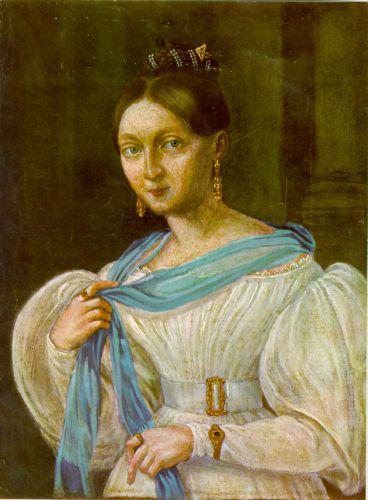
Matevž Langus was destined to follow in the footsteps of his family and become a blacksmith, but his passion for art ultimately took him to Vienna and Rome, and he became one of the most prolific late Baroque painters in the Slovenian Lands.
Langus was born in 1792 in Kamna Gorica. The small town was known for its ironmaking tradition, and he trained to become a blacksmith. After his father died when the boy was just 10, Matevž Langus had to support his family by making nails. But he had other dreams -- and he remained determined to make them a reality.
He went to study art in Klagenfurt, where he also learned to read and write, and eventually attended the prestigious Academy of Art in Vienna. Because he came from a poor family, he could not afford to pay the tuition, and was forced to drop out after just two years. Undaunted, he later spent time in Rome and Stuttgart, where he familiarized himself with the work of the European masters.
Back in Ljubljana, Langus developed useful contacts with the Catholic clergy and eventually emerged as a highly sought-after artist. He decorated several churches with frescoes. Among his most famous works is the dome of St. Nicholas Cathedral in Ljubljana, as well as several frescoes in the city’s Franciscan Church. His illusionistic approach made him famous as one of Slovenia’s last Baroque artists.
Beside his religious frescoes, Langus is perhaps best known for his portraits of Slovenia’s 19th century nobility. Among his subjects were Julija Primc, the love interest of Slovenia’s legendary poet France Prešeren, and the linguist Matija Čop. Some of Langus’ paintings were even sent to the United States, where a Slovenian named Frederic Baraga served as a missionary and collected the artist’s work.
Langus died in 1855, but his paintings continue to shed light into a period when Slovenian society was experiencing a cultural renaissance. Each September, Langus’ legacy comes alive when Kamna Gorica hosts a number of cultural events known as Langus’ Days, in honor of the small town’s famous son.


































































